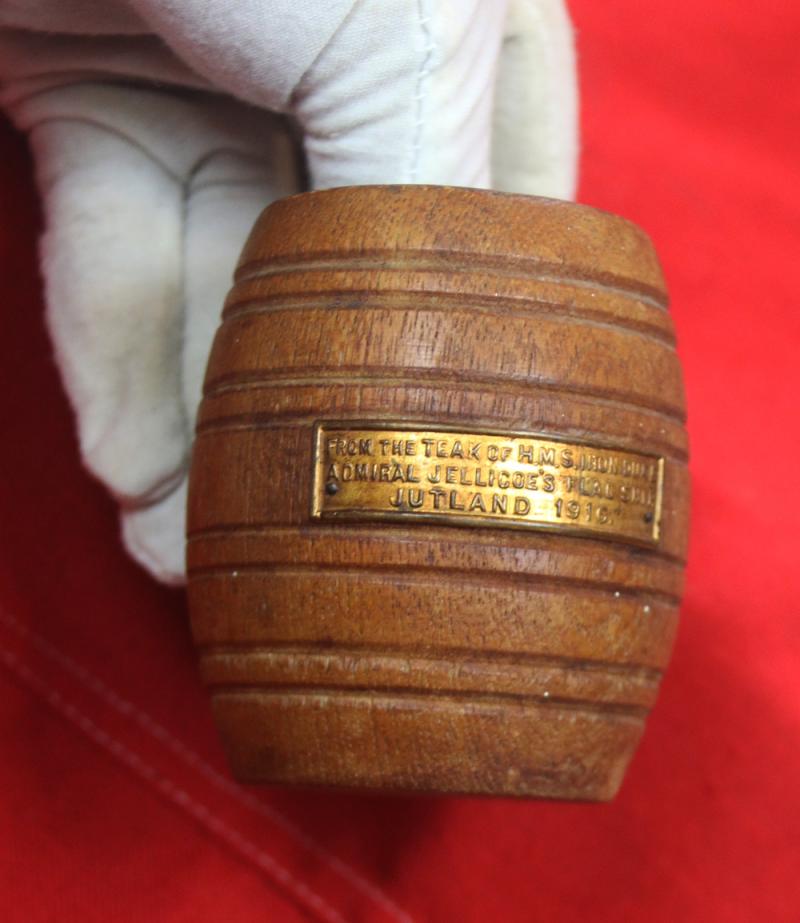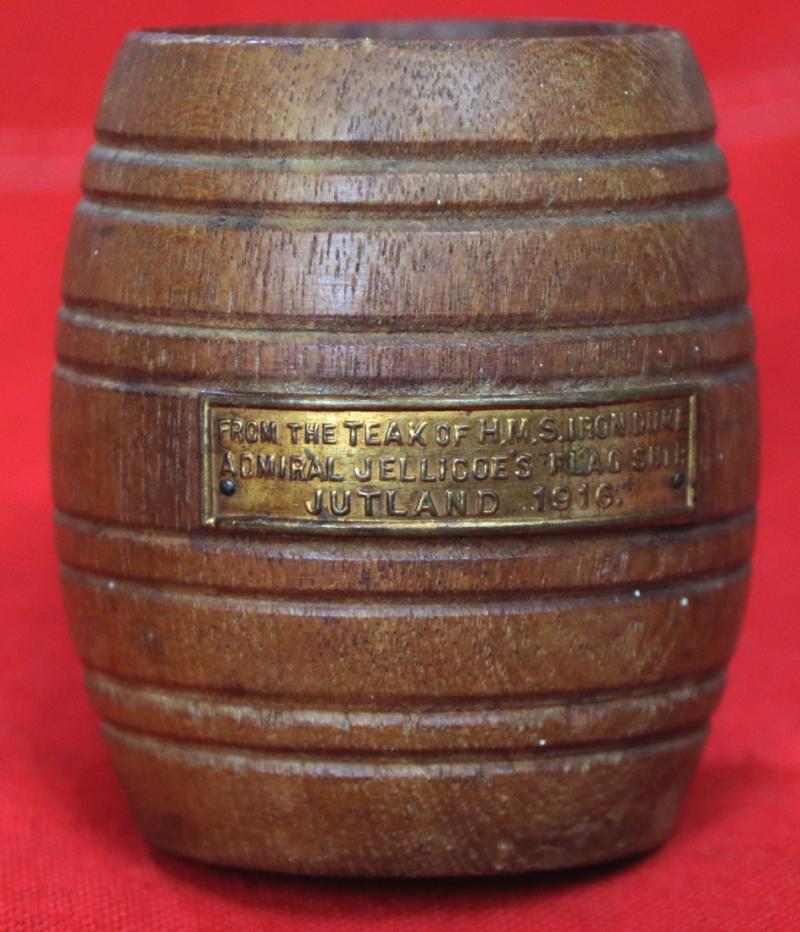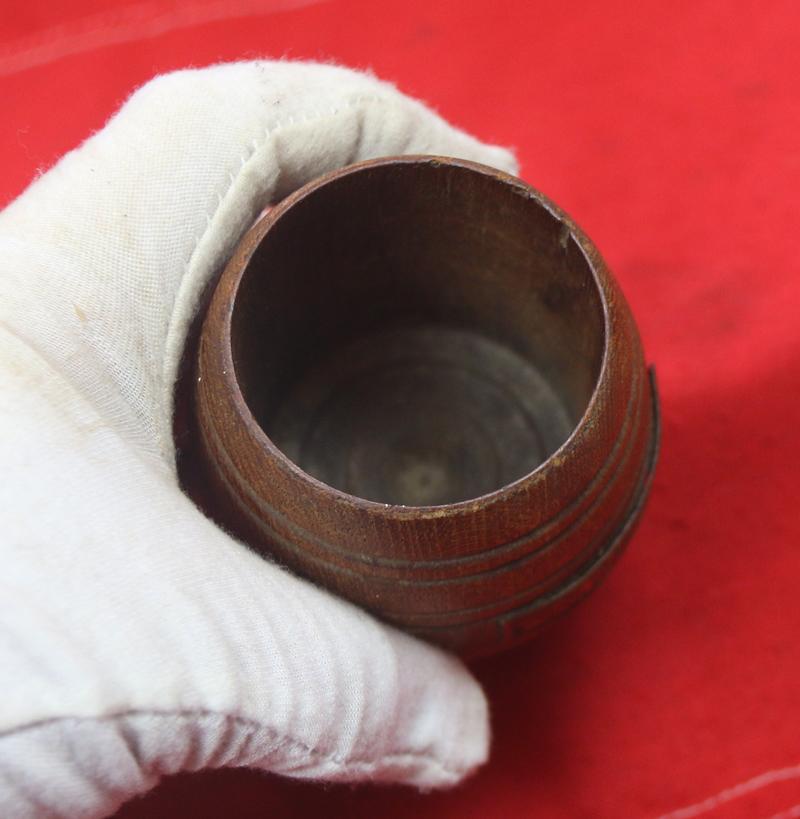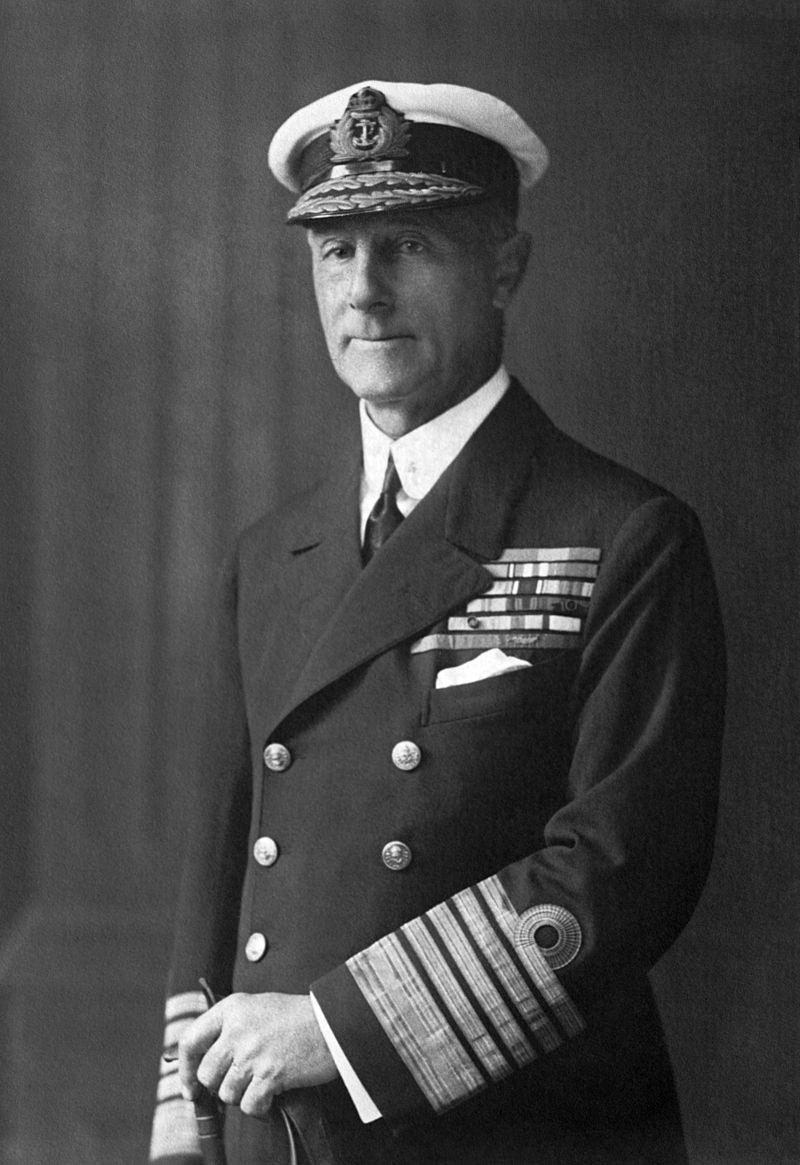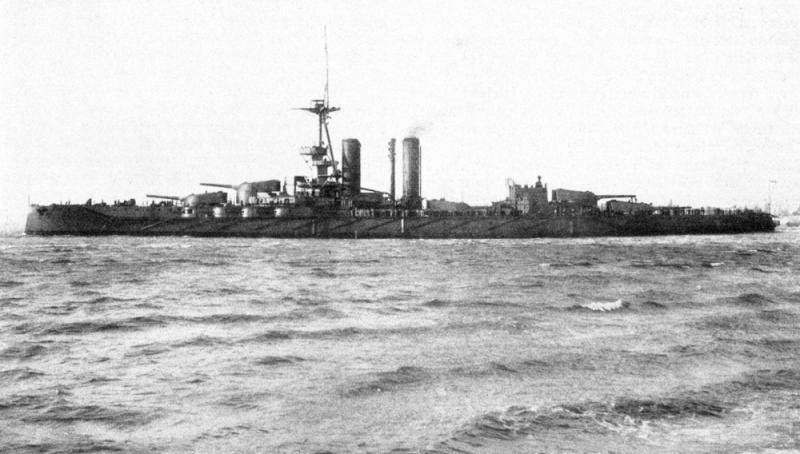A Very Interesting and Functional Original Souvenir from Admiral Jellicoe's Flagship, HMS Iron Duke, from the Battle of Jutland. The Greatest Sea Battle Since Trafalgar
A wooden miniature barrel made from parts of HMS Iron Duke, the admiral's flagship at Jutland. With a copper name plate thereon.
The Battle of Jutland was a naval battle fought between Britain's Royal Navy Grand Fleet, under Admiral Sir John Jellicoe, and the Imperial German Navy's High Seas Fleet, under Vice-Admiral Reinhard Scheer, during the First World War. The battle unfolded in extensive manoeuvring and three main engagements (the battlecruiser action, the fleet action, and the night action), from 31 May to 1 June 1916, off the North Sea coast of Denmark's Jutland Peninsula. It was the largest naval battle and the only full-scale clash of battleships of the war. Jutland was the third fleet action between steel battleships, following the Battle of the Yellow Sea in 1904 and the Battle of Tsushima in 1905, during the Russo-Japanese War. Jutland was the last major battle in history fought primarily by battleships.
Germany's High Seas Fleet intended to lure out, trap, and destroy a portion of the British Grand Fleet, as the German naval force was insufficient to openly engage the entire British fleet. This formed part of a larger strategy to break the British blockade of Germany and to allow German naval vessels access to the Atlantic. Meanwhile, Great Britain's Royal Navy pursued a strategy of engaging and destroying the High Seas Fleet, thereby keeping German naval forces contained and away from Britain and her shipping lanes
Fourteen British and eleven German ships sank, with a total of 9,823 casualties. After sunset, and throughout the night, Jellicoe manoeuvred to cut the Germans off from their base, hoping to continue the battle the next morning, but under the cover of darkness Scheer broke through the British light forces forming the rearguard of the Grand Fleet and returned to port.8
Both sides claimed victory. The British lost more ships and twice as many sailors but succeeded in containing the German fleet. The British press criticised the Grand Fleet's failure to force a decisive outcome, while Scheer's plan of destroying a substantial portion of the British fleet also failed. The British strategy of denying Germany access to both the United Kingdom and the Atlantic did succeed, which was the British long-term goal.
Iron Duke served as the flagship of the Grand Fleet during the First World War, including at the Battle of Jutland. There, she inflicted significant damage on the German battleship SMS König early in the main fleet action. In January 1917, she was relieved as fleet flagship. After the war, Iron Duke operated in the Mediterranean as the flagship of the Mediterranean Fleet. She participated in both the Allied intervention in the Russian Civil War in the Black Sea and the Greco-Turkish War. She also assisted in the evacuation of refugees from Smyrna. In 1926, she was assigned to the Atlantic Fleet, where she served as a training ship.
Iron Duke remained on active duty for only a few more years; in 1930, the London Naval Treaty specified that the four Iron Duke-class battleships be scrapped or otherwise demilitarised. Iron Duke was therefore converted into a gunnery training ship; her armour and much of her armament was removed to render her unfit for combat. She served in this capacity until the outbreak of the Second World War in September 1939, when she was moored in Scapa Flow as a harbour defence ship. In October, she was badly damaged by German bombers and was run aground to avoid sinking. She continued to serve as an anti-aircraft platform for the duration of the war, and was eventually refloated and broken up for scrap in the late 1940s.
The Battle of Jutland, 1916
Date 31 May – 1 June 1916
North Sea, near Denmark
Belligerents
United Kingdom German Empire
Commanders and leaders
United Kingdom of Great Britain and Ireland John Jellicoe
United Kingdom of Great Britain and Ireland David Beatty
German Empire Reinhard Scheer
German Empire Franz Hipper
Strength
Total: 151 combat ships
28 dreadnought battleships
9 battlecruisers
8 armoured cruisers
26 light cruisers
78 destroyers
1 minelayer
1 seaplane carrier
Total: 99 combat ships
16 dreadnought battleships
5 battlecruisers
6 pre-dreadnought battleships
11 light cruisers
61 torpedo-boatsa
Casualties and losses
6,094 killed
674 wounded
177 captured
3 battlecruisers sunk
3 armoured cruisers sunk
8 destroyers sunk
(113,300 tons sunk)
2,551 killed
507 wounded
1 battlecruiser sunk
1 pre-dreadnought battleship sunk
4 light cruisers sunk
5 torpedo-boats sunk
(62,300 tons sunk)
Code: 24877
90.00 GBP

